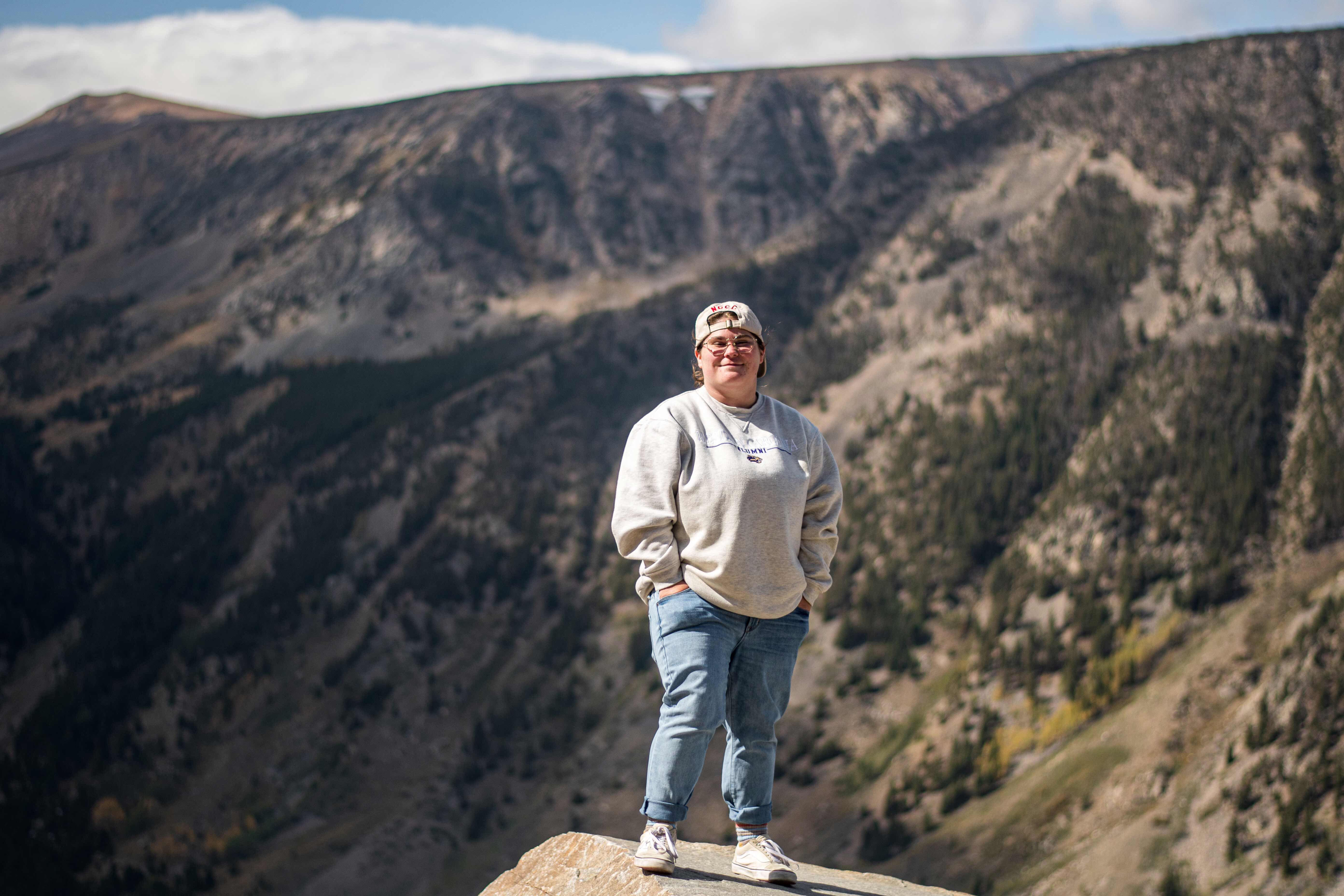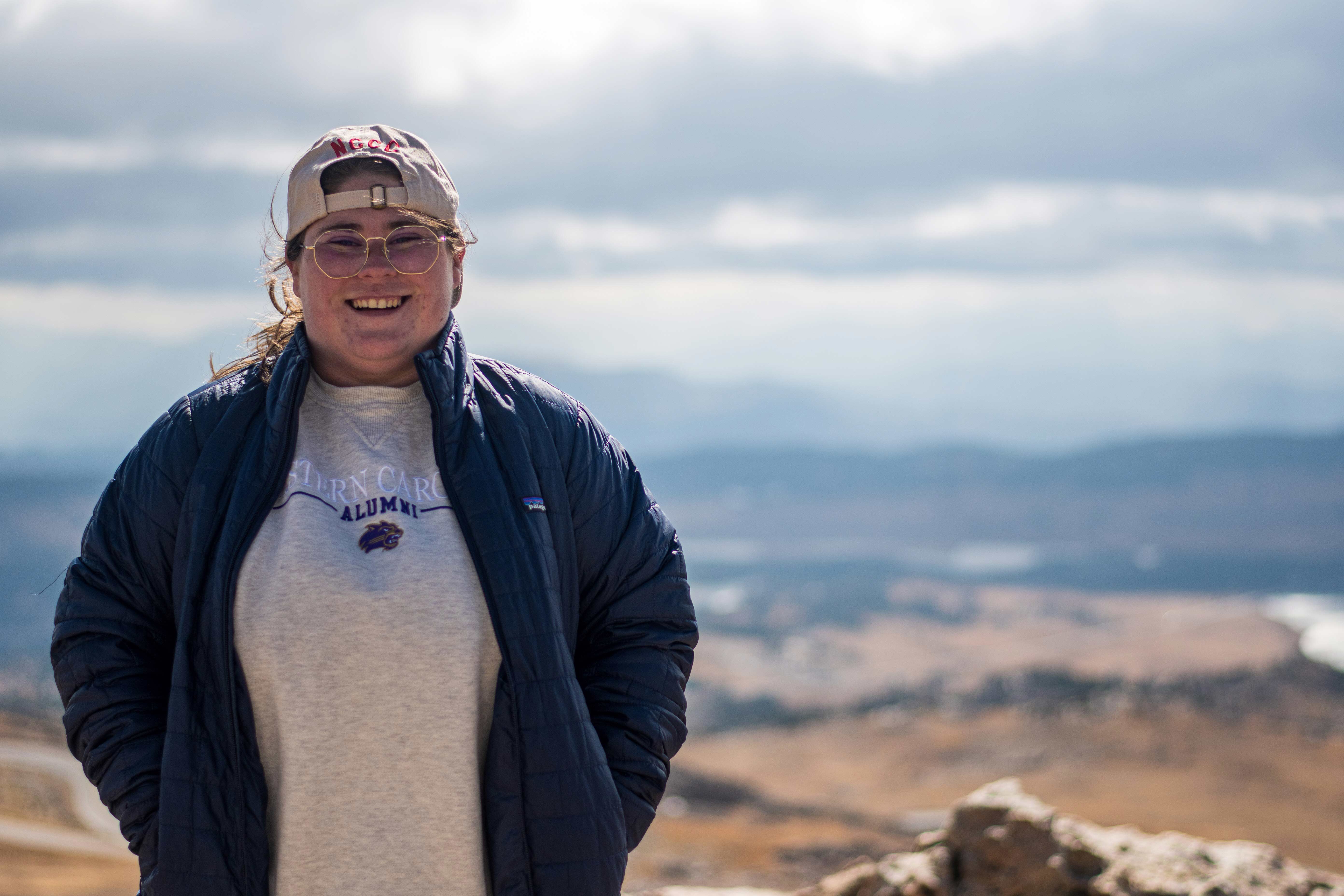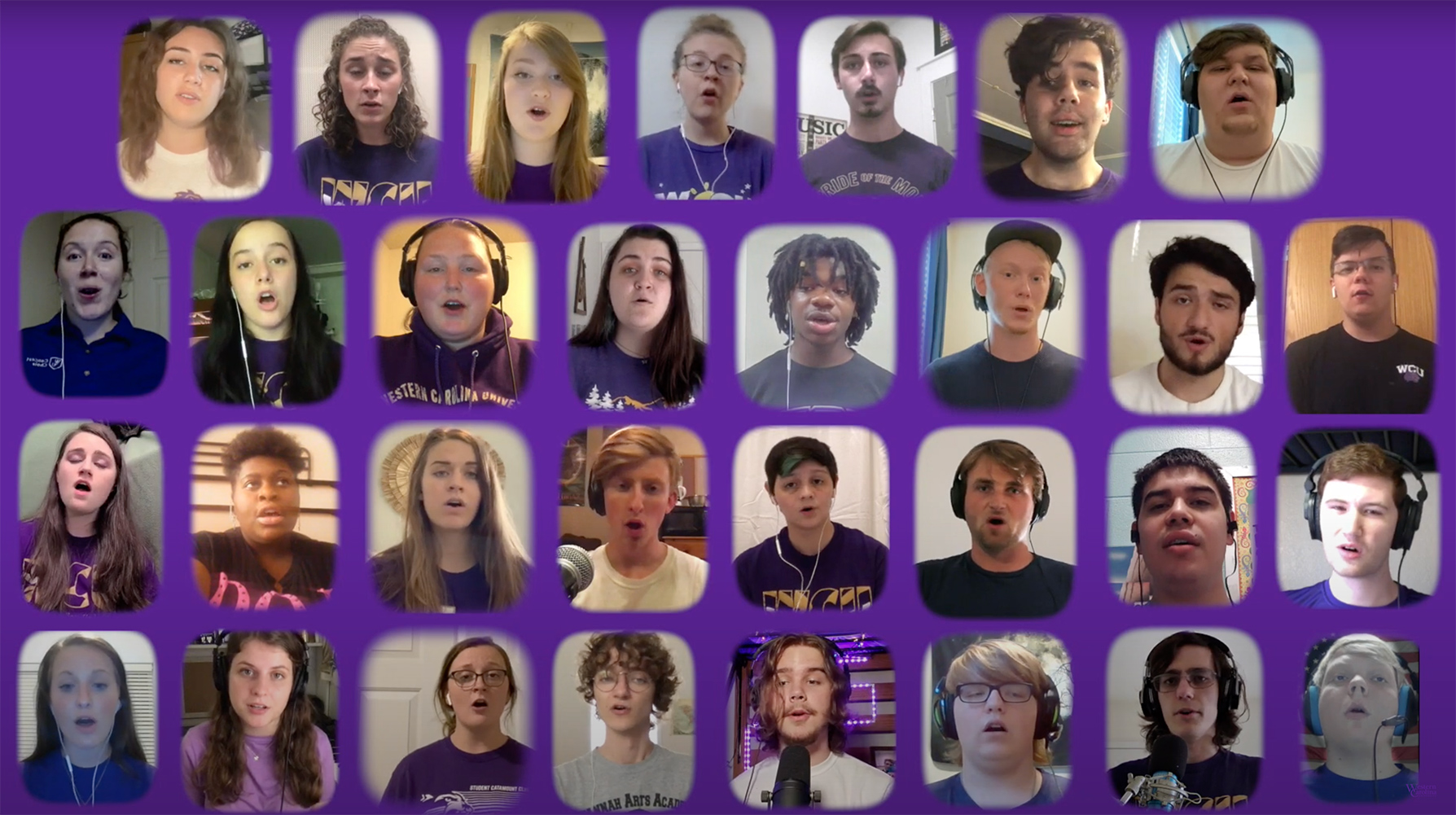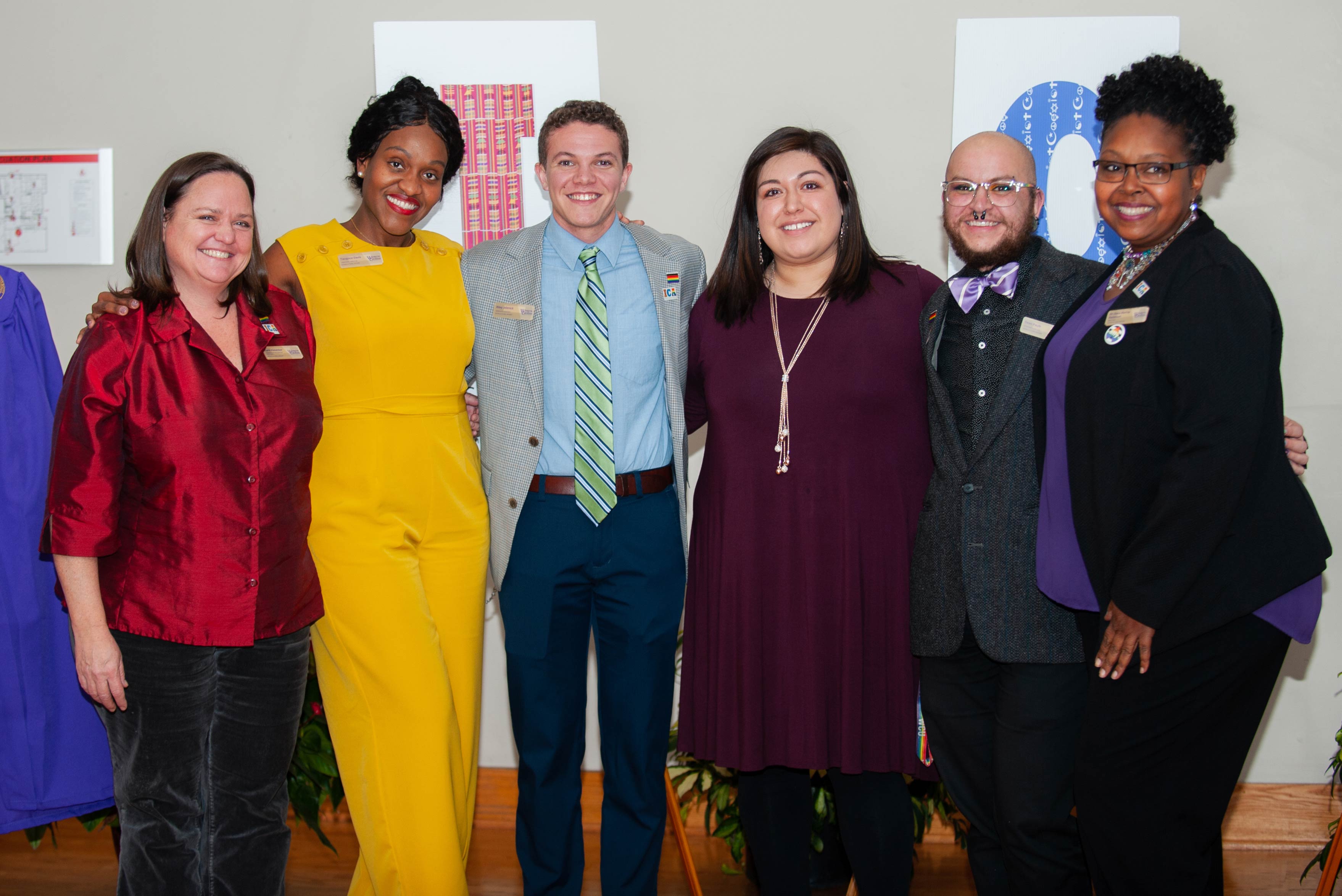- Commencement
- Graduates
- The Bright Side of COVID-19
The Bright Side of COVID-19
By Melanie Threlkeld McConnell

Photo by Schyler Alln
On Wednesday, Dec. 2, nearly seven months after she had graduated from Western Carolina University, Sara Mears was on day two of a three-day drive from one life-changing adventure to another, oddly for which she had COVID-19 to thank.
Riding in a 15-passenger van with her six teammates — or in COVID terms, bubblemates — Mears and her team were traveling from Red Lodge, Montana, to Middletown, California, to help with rebuilding efforts from the devastating fires of 2015. The group had spent the past two and a half months living and working in the shadow of Montana’s majestic Beartooth Mountains, helping to give new life to a 100-year-old former school building and improving the habitat at a wildlife sanctuary, all with a little backpacking on the side.
Their journey would take them from an elevation of 5,500 feet to 1,100, from mountain lakes to the Pacific Ocean, extremes in geography, but not in purpose. But first, they had a little detour to make: Utah’s Zion National Park.
What a difference a pandemic can make.
Mears is working for AmeriCorps’ National Civilian Community Corps, a program that engages young people in team-based community service across the United States. She had applied to work with the national program before graduation and specifically to work alongside the Federal Emergency Management Agency to learn administrative skills related to disaster relief and preparedness through its FEMA Corps track. She had planned to spend the next 10 months working in small and rural communities along the West Coast, helping them prepare for and respond to disasters.
But the emergence of COVID-19 changed that, upending business, education and life as the world knew it, and forcing communities around the country to adapt to the unprecedented challenges of a life-threatening pandemic. AmeriCorps’ response was to reduce its team sizes and institute a strict federal guidelines-based COVID protocol, which requires mask wearing at all times except when team members are in their bubble. It also canceled its FEMA Corps track and moved those workers — Mears among them, — to other assignments.
As one door closes, another opens, they say, and Mears’ new door just happened to be Montana’s gateway to Yellowstone National Park, a place she had never imagined herself being.
“With FEMA, it would have been a lot of the administrative prep to do disaster management and relief management, making sure communities know where their resources are, how to access those resources and how to apply for aid, making sure direct citizens know how to get help, said Mears, who grew up in Cary. “Working with FEMA would have been a really cool opportunity, but I really do appreciate the opportunity to do the nitty gritty direct service.”
Mears and her team spent their time in Red Lodge helping to transform the Roosevelt Center (where they also lived), a former 1920s-era school building now owned by the Red Lodge Area Community Foundation, into an arts and cultural center and community space. The team stayed in the building’s auditorium, which used to be the school gymnasium, sleeping on cots, sharing one shower among seven people and “cooking” in a makeshift kitchen with little more than a hotplate, microwave and toaster oven.
When Mears and her team weren’t painting, weeding or hauling old furniture and other debris to the dump, they worked at the Yellowstone Wildlife Sanctuary, tearing down old animal enclosures to make room for bigger and better habitat, and Mears’ favorite— planting lots of ash, aspen and pine trees. “One of the more important aspects that make that work even more meaningful is that the trees are vital to helping with soil erosion and creating a barrier for wind and snow in the winter,” she said, especially at the sanctuary’s wolf enclosure. “Last winter, because they didn’t have enough barrier, the snow drift got so high the wolves were just able to walk over the fence.”
Mears and her team will switch gears in Middletown, where they will help build homes and focus on long-term recovery work in response to the 2015 Valley Fire, which burned more than 76,000 acres and several communities. Luckily, their living arrangements are an upgrade over the community living space they had in Montana: volunteer worker dorms built by previous AmeriCorps members.
While Mears has learned to dig holes for trees, pound a hammer and use other tools, she has also learned invaluable soft skills, such as better ways to mitigate and manage conflict, group bonding, leadership, best practices for dialogue and forward spaces. Interpersonal skills that are “vital to service work but often go overlooked,” she said.
Although COVID-19 forced a change in Mears’ post-graduation plans, she has made the most of it and said she really can’t imagine being anywhere else. “The coolest thing I’ve learned through this program so far, and I think I will continue to relearn over and over again, is that I am capable of so much more than I thought I was,” she said. “When I was getting ready to leave North Carolina, it was pretty scary to think about flying across the country with nothing but one duffle bag, but it ended up being super worth it.”
So, what has been the ‘wow factor’ on this journey? “The short, sillier answer to that is the scenery we get to experience. I don’t know that I ever had a concrete plan to get to see the Rocky Mountains,” Mears said.
“The more meaningful answer, the thing that I think is so phenomenal about this, is they took seven individuals who didn’t know each other and who all came from extremely different walks of life and told us we were going to be a team, and to figure it out. And it’s so phenomenal to me the way you can figure it out. It felt like it came easy for all of us to find common ground and to connect. It genuinely feels like we’re all here for a reason and that we all got put on the same team for a reason. We all have so much to learn from each other, and that’s an exciting thing to think about.”

Photo by Schyler Alln

